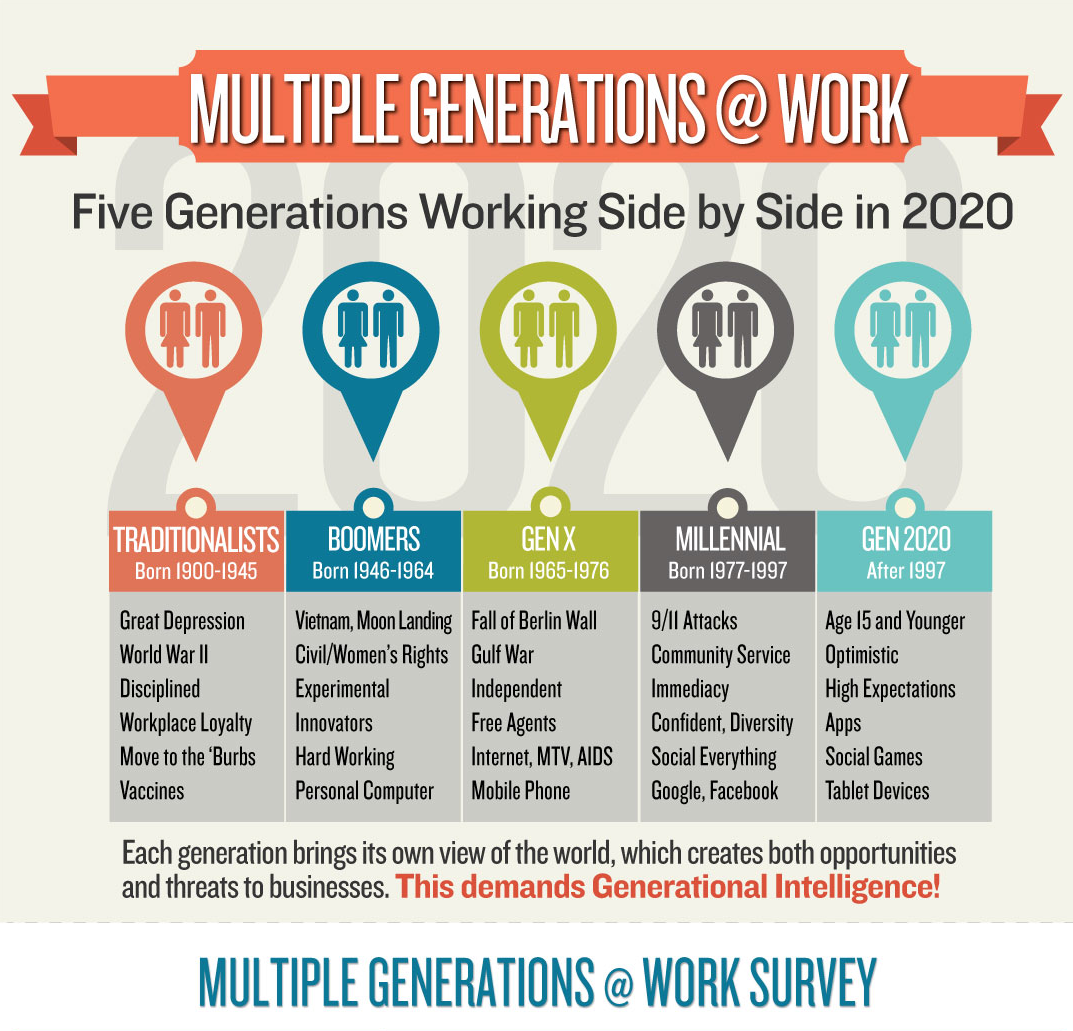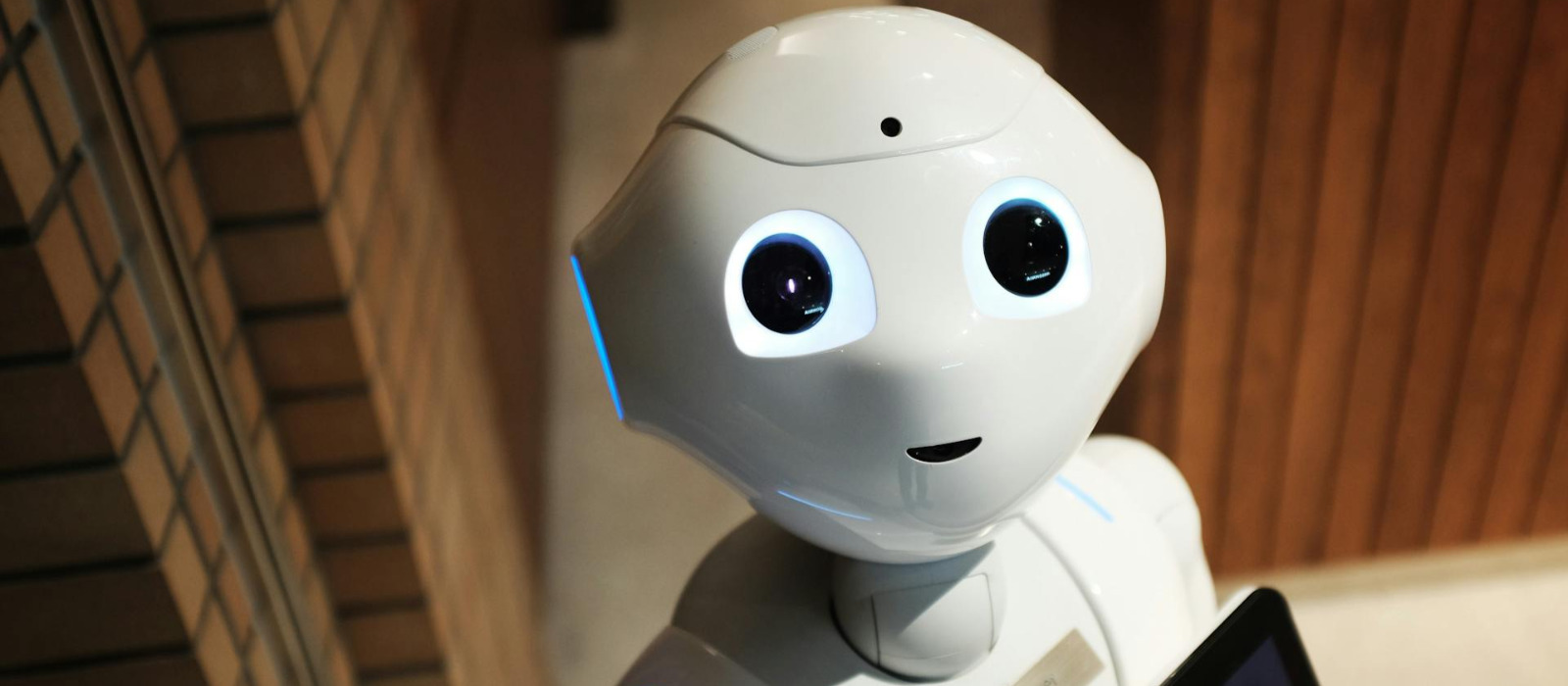The change in workforce has always been dynamic since the industrial times, however this change has been quicker in the past two decades because of the growth of technology and change in lifestyle which has led to a paradigm shift in priorities for different generations. This shift has led to a clear division in lifestyles between generations that flowed into all aspects of their lives including work. So what does this mean for the modern day employer? What are the challenges that come with such diversity? And more importantly can employers empower such a workforce of diverse age groups to perform as one team? To answer these, it is important to define these age groups, understand what are their priorities and the challenges these priorities pose to an employer.
The five-generation workforce is categorised into Traditionalists, Baby-boomers, Gen-X, Gen-Y and Gen Z, based on their birth years.
1. Traditionalists: The individuals in this group are born between 1922 and 1945. Traditionalists were born into an age of disciplined rules, conformity and adherence to a strict protocol. Since this age group grew up through the industrial period, there is resistance for modern technology and individuals find it difficult to adapt to innovative ideas and innovation. Traditionalists possess tremendous experience in management, abilities to mentor new employees and objectively look at situations because of their nature. Due to such capabilities, they become consultants to CEO’s, managing directors and entrepreneurs.
 2. Baby Boomers: Individuals born between 1946 to 1964 are categorised as baby boomers. Like the previous generation, baby boomers are highly driven to follow established rules and place high value on work, experience, status. They dislike change as much as traditionalists but are open to ideas and tools that help ease their way of living and doing work.
2. Baby Boomers: Individuals born between 1946 to 1964 are categorised as baby boomers. Like the previous generation, baby boomers are highly driven to follow established rules and place high value on work, experience, status. They dislike change as much as traditionalists but are open to ideas and tools that help ease their way of living and doing work.3. Generation-X: Individuals born between 1965 to 1976 belong to Gen-X. The paradigm shift towards technology, independence and self-sufficiency began here. Although Gen-Xer’s prefer to be independent, they work well within organizations to become intrapreneurs. This group places value on results, community building and do not identify themselves with the management hierarchy, as much as the previous generation.
4. Millennials, (Generation Y): Individuals born between 1977 to 1995 are classed as Millennials or Gen-Y. Millennials exhibit highly contrasting attribute compared to baby-boomers and traditionalists. Since this generation grew up with technology, there is a higher acceptance for innovative technology, ideas and drive to learn more about innovation. Personal growth, work-life balance and satisfaction with their vocation are decision factors for millennials to whether it comes to looking for a new job or remaining with their current one. Entrepreneurship and the tendency to create an enterprise to serve the community is also a major trait found in millennials.
5. Generation Z: Individuals born in 1996 and after this date are categorized as Gen-Z. This group of individuals are born and raised in an environment comprising of technology, automated processes and advanced tools that didn’t previously exist. And so, this has become a standard for this generation who refuse to work with processes, people and functions that less geared in terms of technology. As this group is relatively new in the workforce, there is much to learn of their mode of operation but it can be predicted that they will share the need to be independent with their millennial counterparts and desire face-less transactions due to the norm as seen in their generation.
Challenges with a 5-Gen work place:
1. Experience: The 5-generations have experience in different areas both beneficial in the corporate environment. The challenge lies in bringing this expertise together to build a collaborative team for the growth of the organisation. For example, Traditionalists have expertise in management, organization and economic cycles while millennials and Gen-z’ers will have a stronger expertise with social media, technology and innovative ways of completing tasks.
2. Change in careers: Traditionalists, Baby-boomers and to some extent Gen-X’ers are used to staying with two or three employers throughout their careers whereas millennials in a survey expect to have up to 7 employers in their career (Pwc,2017)
3. Flexibility: Flexibility is a key issue for employers when it comes to the five-generation workforce. Millennials are the most flexible in terms of flexible work hours, relocation, company working spaces and time of work. This flexibility diminishes from generation to generation, with the Traditionalists who are least flexible who prefer set workspaces, leave days, working hours and defined work location. Accommodating this diversity may pose a challenge for employers today.
4. Expectations: Managing employee expectations also seems an arduous task for employer’s due to such diverse needs among its 5-generation. While traditionalists demand security, guaranteed future employment, conventional methods of completing tasks in a modern ever changing corporate environment, the millennials are highly engaged in innovation, demand flexibility, independency and disregard for expertise.

Towards a unified workforce
1. Create Mentor programs: Mentorship program is an excellent method to transfer expertise throughout the organization. Millennials prefer mentors according a study conducted by PWC (2017) to increase their understanding of the corporate environment. Creating partner programs, building relationships between traditionalists and millennials can help these two contrasting groups exchange vital information that can accelerate an organization’s growth and is now widely practiced in the form of internships or short experience programs in most companies.
2. Create an inclusive Company Culture: Communication & Cuture hold the key. With traditionalists being used to a strict, rigid, routine way of working while millennials being used to a flexible, spontaneous and free-form way of working can make it difficult for employers to set a standard. However, to find a middle ground between rigidity and a fluid dynamic working space and culture is possible given a fair attempt, and this should be an ongoing effort to create, assess and review the workplace happiness by the employers for diverse groups.
3. Manage expectations: Employers must constantly evaluate the corporate landscape and keep an open channel of communication with its employees. This helps employers set expectations and allow their employees know exactly where they will have to upskill or learn new skillsets.
Posted in : Work Culture
Views : 45783
Leave a Comment
Hey there !
Author Details
Related Blogs
Popular Tags
Subscribe Now








